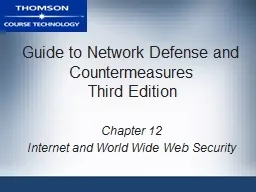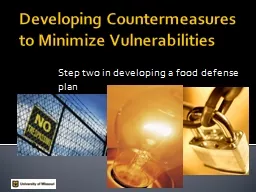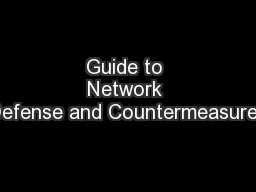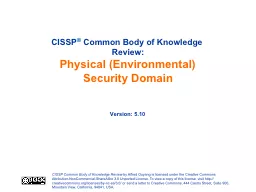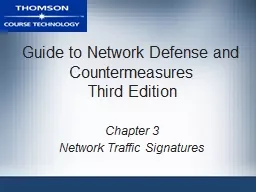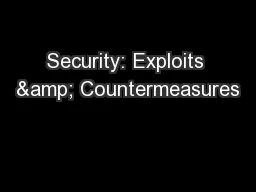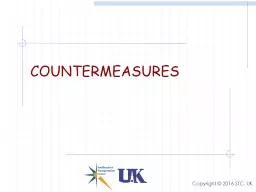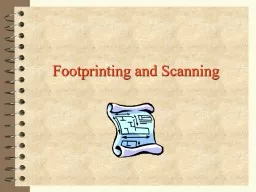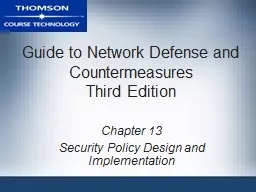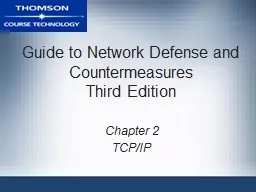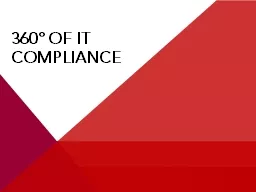PPT-Guide to Network Defense and Countermeasures
Author : natalia-silvester | Published Date : 2015-12-09
Third Edition Chapter 12 Internet and World Wide Web Security Guide to Network Defense and Countermeasures 3rd Edition 2 Examining the Structure of the Internet
Presentation Embed Code
Download Presentation
Download Presentation The PPT/PDF document "Guide to Network Defense and Countermeas..." is the property of its rightful owner. Permission is granted to download and print the materials on this website for personal, non-commercial use only, and to display it on your personal computer provided you do not modify the materials and that you retain all copyright notices contained in the materials. By downloading content from our website, you accept the terms of this agreement.
Guide to Network Defense and Countermeasures: Transcript
Download Rules Of Document
"Guide to Network Defense and Countermeasures"The content belongs to its owner. You may download and print it for personal use, without modification, and keep all copyright notices. By downloading, you agree to these terms.
Related Documents

